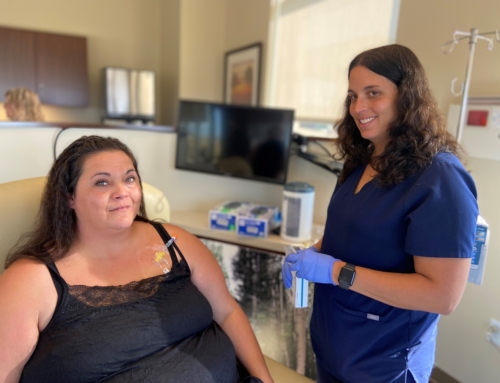So you’ve had pain in your hip for some time. You’ve tried everything from medicines to physical therapy to walkers but it’s still interfering with your everyday movement and causing you to give up your favorite activities. It’s time to consider total joint replacement surgery. Here’s what you can expect.
Types of Hip Surgery
With hip replacement surgery, the best outcomes and quickest recoveries come from minimally invasive methods that boast smaller incisions and minimal damage to surrounding tissue, muscles and nerves. With less damage there is less scarring, pain, numbness and tightness after surgery. Did you know there are different types of hip surgery?
Maybe you’ve heard of the common anterior and posterior methods. The posterior method is considered the traditional method for hip replacement, and is most commonly used. Approximately 70% of orthopaedic surgeons perform this type of surgery. With the posterior method the surgery is performed on the back and the incision is made at the back of the hip.
With an anterior surgery, the incision is made at the front of the hip. Some experts believe the anterior approach offers less damage to muscles, faster recovery and less pain after surgery than the posterior.
Yet there is a third type of hip surgery that’s quickly gaining attention called the superior or SuperPATH method. Only a handful of physicians in Colorado are trained in the SuperPATH method and Dr. Kevin Borchard, orthopedic surgeon joining The Memorial Hospital, is one of them. Dr. Borchard has performed over 700 SuperPATH hip replacements with great success.
“It’s an approach that requires more training since it’s more technical, but it’s worth it to patients,” Borchard said. With the anterior method, numbness due to nicked or cut nerves can be an issue, and with the posterior method patients can expect more pain and soreness and a longer recovery.
“With the SuperPATH method no muscles are cut and the least amount of soft tissue is damaged. The overall complication risk is lower and recovery is much quicker than the traditional approach. It’s common for patients to walk out of the hospital the next day,” he added.
Most hip replacement surgeries require dislocating the femoral head from the socket. With the SuperPATH technique, this isn’t necessary.
Recovery Time
With traditional posterior surgery, patients can expect to spend 1 to 3 days in the hospital and 4 to 6 weeks getting back to walking a few blocks without pain. Recovery time for anterior is somewhat faster.
With the SuperPath method incision sizes are much shorter (2 to 3 inches) compared to the traditional approach (8 to 10 inches). Since no muscles are cut and minimal tissue is damaged, pain is less and people are back on their feet much more quickly.
“I like the SuperPath method because recovery is much shorter. It can be days instead of weeks,” Borchard stated.





